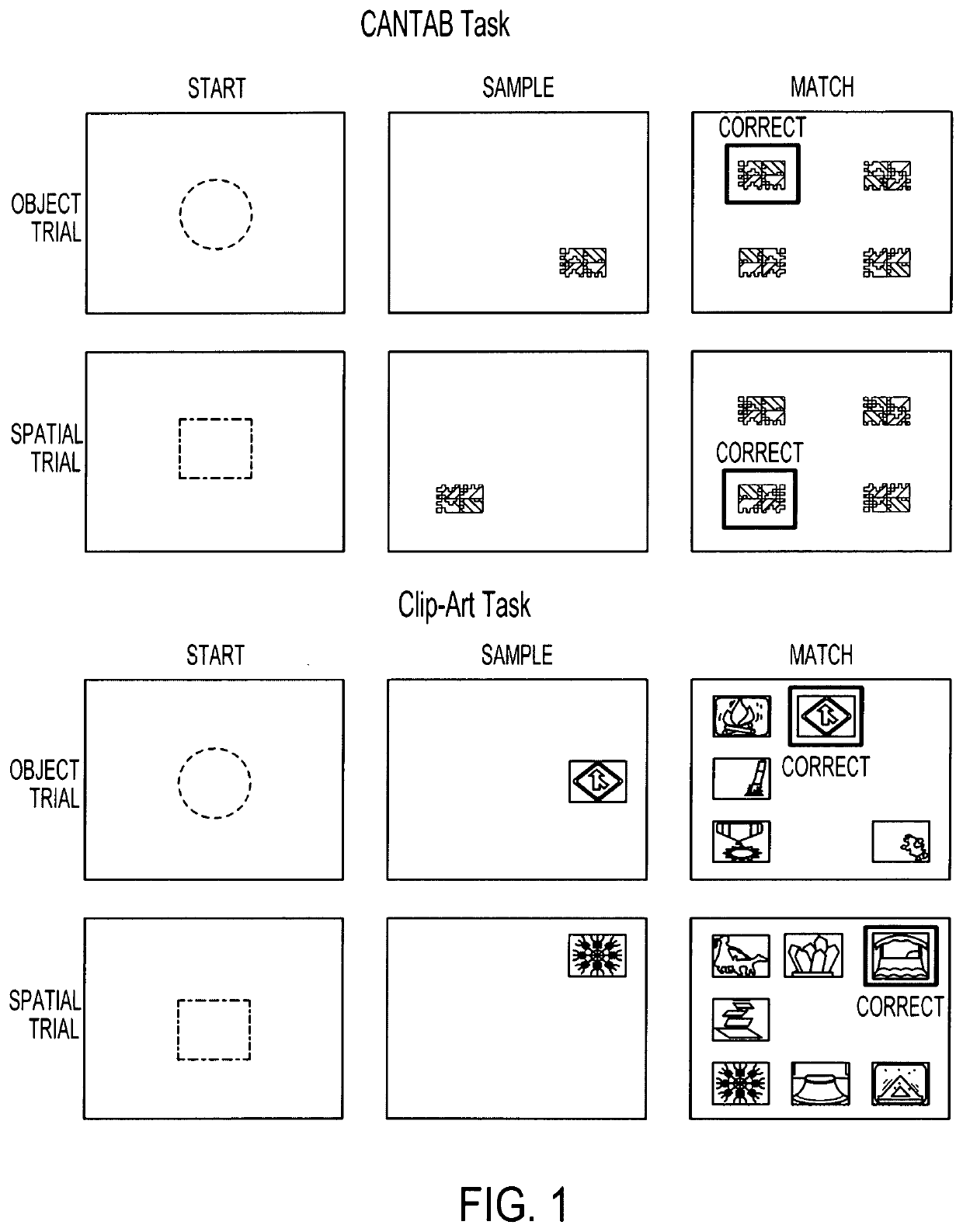Apparatus and method for decoding and restoring cognitive functions
a cognitive function and apparatus technology, applied in the field of neuroscience and therapy, can solve the problems of inability to draw correlations between hippocampal activity and memory function suitable and the creation of models for the design and construction of hippocampal prostheses has so far remained elusive, so as to restore the effect of restoring the subject's ability to form long-term memories
- Summary
- Abstract
- Description
- Claims
- Application Information
AI Technical Summary
Benefits of technology
Problems solved by technology
Method used
Image
Examples
Embodiment Construction
[0036]As used herein, “large-scale” means that the brain activity pertains to networks comprised of many neurons, and not to activity at a single neuron or small group of related neurons.
Large-Scale Sparse Model and Use for Memory Prostheses
[0037]The present disclosure relates to building and using sparse multi-input, multi-output (MIMO) nonlinear dynamical models for modeling large-scale neuronal networks in the brain. The resulting models serve as a computational basis of cortical prostheses for restoring cognitive functions.
[0038]The hippocampus is a brain region responsible for the formation of new long-term episodic memories. The hippocampus receives signals carrying short-term memories from neocortices and transforms them with its feedforward pathways into signals that can be stored as long-term memories back in neocortices. If a hippocampal region is damaged due to disease or injury, new long-term memories cannot be formed even though short-term memories remain intact.
[0039]A...
PUM
 Login to View More
Login to View More Abstract
Description
Claims
Application Information
 Login to View More
Login to View More - R&D
- Intellectual Property
- Life Sciences
- Materials
- Tech Scout
- Unparalleled Data Quality
- Higher Quality Content
- 60% Fewer Hallucinations
Browse by: Latest US Patents, China's latest patents, Technical Efficacy Thesaurus, Application Domain, Technology Topic, Popular Technical Reports.
© 2025 PatSnap. All rights reserved.Legal|Privacy policy|Modern Slavery Act Transparency Statement|Sitemap|About US| Contact US: help@patsnap.com



